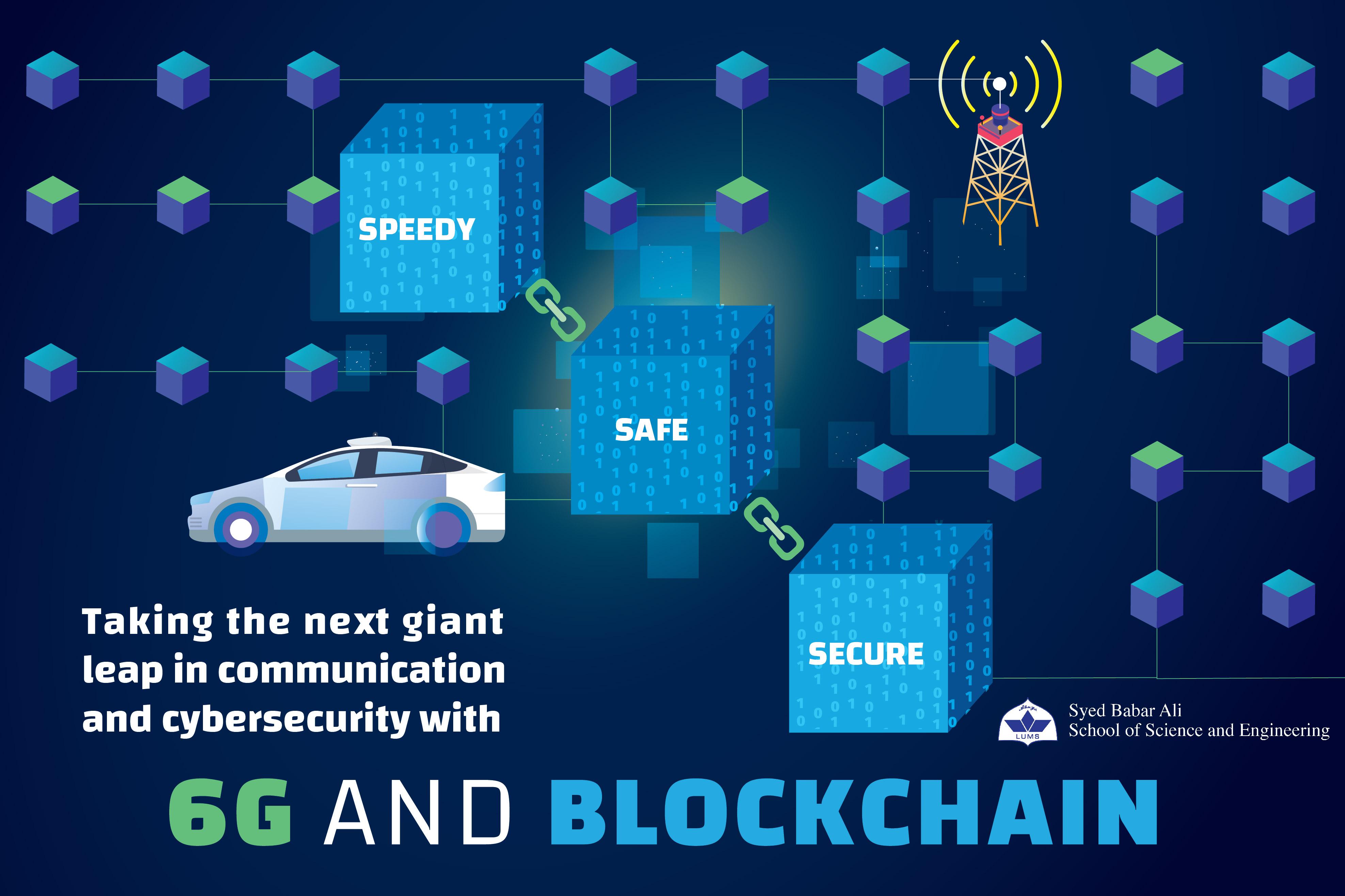
Taking the Next Giant Leap in Communication and Cybersecurity with 6G And Blockchain
Ali Hussain Khan, under supervision from Dr. Naveed Ul Hassan from the Department of Electrical Engineering, deems 6G infrastructure as the future of secure and ubiquitous communication – of course, not without blockchain. According to this study, the vision for 6G is driven by futuristic applications like Human Bond Communication (HBC), Multi-sensory eXtended Reality Applications (XR), Wearable Technology based Futuristic Applications (WTech), Large-scale connected autonomous systems (LS-CAS), and greater support for several vertical domains. These applications have very stringent requirements of data rate, latency, and reliability. The nature of data collected by several 6G applications will be increasingly sensitive and critical. The successful adoption of 6G applications by the users would therefore require strict data security guarantees. The stringent network performance requirements of these applications will require support of technologies like Reconfigurable Intelligent Surfaces (RIS), TeraHertz (THz) communication, Artificial Intelligence (AI) and small cell networks. To enable efficient combination of these technologies for the provisions of resources to achieve the performance requirements, collaboration and coordination in a transparent and trustless environment is needed. These technologies also require dense network deployments which will lead to more infrastructure and complicated network deployment. Network decentralization will be needed to simplify the network deployment. In light of this, 6G requirements can be divided into performance-related and security-related requirements.
Blockchain will provide the desired transparency and trustlessness in the decentralized network. It will also provide the strict security requirements of the future communication systems because of its in-built security features. Blockchain is a distributed ledger technology where cryptography and hash functions are used to form a chain of data blocks, created when an event occurs and verified in a decentralized way using consensus algorithms. Automation on blockchain is managed through smart contracts which are computer programs stored on the blockchain to define the contractual obligations and enable the automatic transfer of assets between peers when the required conditions are met. Blockchain, initially only used in cryptocurrencies is now being used in other application domains like smart grid, connected vehicles, and Internet of Things.
To achieve the targets related to performance requirements, 6G networks are expected to be extremely dense 3D integrated communication systems. The previously underutilized vertical dimension (height and depth) would also become increasingly congested with the deployments of high-altitude platforms (HAPs), low-altitude drones, unmanned aerial vehicles, mega-constellations of low earth orbit satellites, and communication ships & submarines. This would make infrastructure and asset management a challenging task. Additionally, the ownership models along with the use of spectrum, computing power and data storage would also become much more complex in order to fulfill the performance-related needs of 6G applications. AI assisted and AI trained models would become increasingly common in 6G to solve challenging resource optimization problems for throughput maximization, latency minimization, and energy efficiency maximization. AI models would also generate and communicate critical signals for several vertical domain applications. Management and security of hard-trained AI models would also become complex in 6G systems. One of the most prominent features of blockchain is the creation of a trustless network where multiple non-trusting parties can interact with each other without any intermediaries. Confidence in the blockchain security features enables decentralized entities in the network to make automated transactions on the network with the help of smart contracts. Consensus algorithms and protocols further allow multiple distributed nodes on blockchain to achieve the same global view of the transactions taking place on the entire network. Integration of blockchain in 6G would therefore provide elegant solutions for resource and AI model parameter management.
With respect to security-related requirements, integration of blockchain in 6G would not only help but also control these targets. Through appropriate selection of network, consensus, and automation management algorithms, blockchain can provide desired levels of data integrity, nonrepudiation, and auditability. Blockchain allows asymmetric Public Key Infrastructure (PKI) based cryptography and the inclusion of privacy preservation frameworks for greater data privacy & confidentiality. Blockchain accepts new blocks only after verification through a consensus mechanism among multiple peer-to-peer (P2P) nodes. Every block is linked to its parent block (previous block in the chain) by a cryptographic hash function. This allows auditability and makes it possible to verify data all the way back to the genesis block. Data integrity in any block can be easily verified simply by checking the hash-trees. Moreover, as the blockchain size increases, data tampering becomes even more difficult because of the linkage between all the chained blocks. Due to these properties, blockchain is different and superior in many ways to traditional security solutions, and a good candidate for security-related requirements in 6G applications.
Commenting on his work, Ali Hussain Khan says “We will demonstrate that combining blockchain and 4G or blockchain and 5G cannot achieve the same level of synergy that we can obtain with blockchain and 6G. Our scenario consists of vehicles, drones and RSUs to incorporate all three dimensions in the system. We consider a data-sharing scenario between vehicles. The data within is considered valid after achieving consensus among the mining nodes after which the data-sharing record is uploaded to the blockchain.”
Ali also mentioned that his team derived the time required for one complete cycle of data-sharing and consensus by deriving relevant expressions based on data sizes and data rates. MATLAB was the primary tool used for all the simulations in this work. They also derived the response of a reputation calculation algorithm based on a pre-defined behavior and calculated the time required for malicious miner detection based on that. His team had observed that for all practical purposes, 6G performed the best and orders of magnitude better than both 5G and 4G. These simulation results are very promising and suggest the use of more secure blockchain implementations in 6G are possible as both complement each other.

